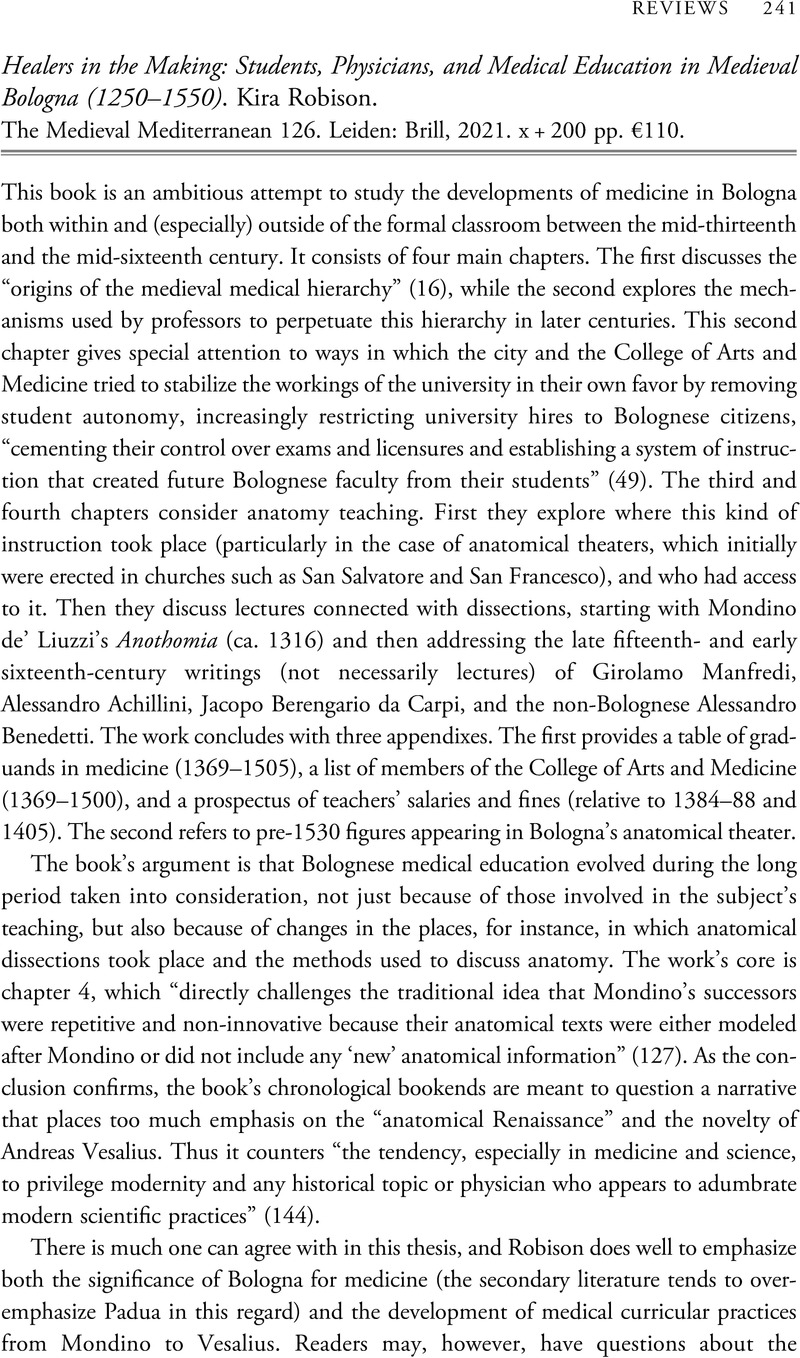No CrossRef data available.
Article contents
Healers in the Making: Students, Physicians, and Medical Education in Medieval Bologna (1250–1550). Kira Robison. The Medieval Mediterranean 126. Leiden: Brill, 2021. x + 200 pp. €110.
Review products
Healers in the Making: Students, Physicians, and Medical Education in Medieval Bologna (1250–1550). Kira Robison. The Medieval Mediterranean 126. Leiden: Brill, 2021. x + 200 pp. €110.
Published online by Cambridge University Press: 17 April 2023
Abstract
An abstract is not available for this content so a preview has been provided. Please use the Get access link above for information on how to access this content.

- Type
- Review
- Information
- Copyright
- Copyright © The Author(s), 2023. Published by the Renaissance Society of America



